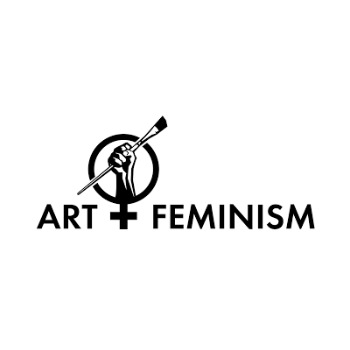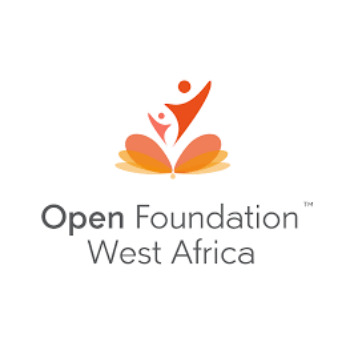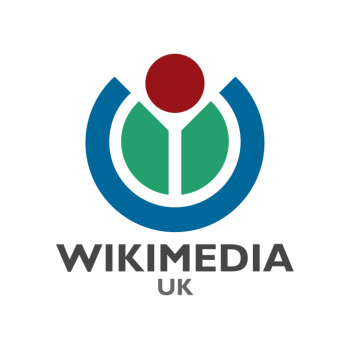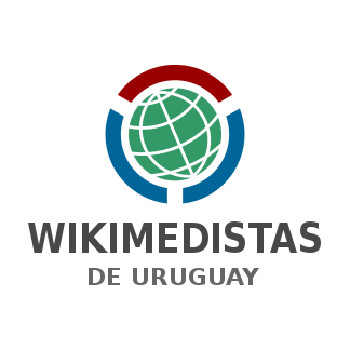The #VisibleWikiWomen 2021 campaign has ended. Thank you for another wonderful edition ?
Read more about this year’s campaign in our closing blog post: “A Farewell to #VisibleWikiWomen 2021: Stories and Reflections”

For the last 3 years, a collective of partners and friends from around the world made available more than 15000 images of women to Wikipedia and the broader internet. We are proud and grateful for that but also aware that there is so much more to be done. Wikipedia (and the broader internet) are still missing many images of important and influential women, especially black, brown and indigenous women.
Welcome to the #VisibleWikiWomen campaign 2021! Join us from 8 March to 8 May 2021 for the fourth edition of the campaign. Let’s make sure all women are fully seen and recognized!
The Issue
Women’s knowledge and contributions to the world are invisible in so many ways. When we look at women’s invisibility online, Wikipedia is a good proxy to explain why this is such a critical issue. Less than ¼ of Wikipedia biographies represent women. Many biographies of women don’t exist or are incomplete.
More often than not, women biographies don’t have images. We estimate that less than 20% of Wikipedia articles of important women have pictures. And, when women’s faces are missing from Wikipedia, that invisibility spreads. Half a billion people read Wikipedia every month, and it is the 5th most visited website in the world, so gaps in Wikipedia have a big impact on the broader internet.

Our plan for 2021
The theme for this 2021 campaign will be Feminist Realities: living our resistance and liberation. Inspired by our partner, Association for Women’s Right and Development (AWID), we have decided to celebrate the women/trans/non-binary people that have been embodying the feminist values to resist and dismantle patriarchy, capitalism, racism and many other systems of power and privilege throughout history.
Inspired by the results of the previous campaigns, our goal for this fourth edition of #VisibleWikiWomen is to bring 5000 images of women to Wikimedia Commons, the big multimedia library for all Wikimedia projects, including the 317 language versions of Wikipedia.
Once again we will be “Celebrating the colors of #VisibleWikiWomen” with a targeted effort to increase the images of influential black, brown and indigenous women that are being uploaded to Wikipedia as part of the #VisibleWikiWomen campaign.
To reach this goal, we invite you – women’s and feminist organizations, culture and memory institutions, Wikipedia editors, user groups, chapters, and anyone who would like to give women the visibility and acknowledgment they deserve. We are excited to collaborate with previous year’s super amigxs and friends again and to welcome new partners from around the world. This year, we expect to expand and deepen our collaboration with partners in Africa.

How to participate?
You can join the #VisibleWikiWomen campaign by gathering and uploading quality images in the public domain, or under free license, to Wikimedia Commons under the VisibleWikiWomen category. These images could be photographs or drawings of women, as well as images of their work, with proper consent.
Besides uploading images to Commons, you can also participate in the campaign by:
- Hosting or attending local events in your communities where photos can be taken or uploaded
- Releasing your existing photos of women under free licence
- Creating illustrations and drawings
- Promoting and publicizing this project by spreading the word about it and using the hashtags #VisibleWikiWomen and #WomenofColors on Facebook, Twitter, and Instagram.
And probably so much more! We’d love to see you coming up with new ideas that make the most sense for you and your communities.
If you need extra support for participating in the campaign, please email us at visiblewikiwomen[at]whoseknowledge[dot]org.
How to get involved?
Here are some additional ways to support the #VisibleWikiWomen campaign:
Content

- Help make our campaign multi-lingual by translating our Meta page, resources kit and the campaign pages of our website into different languages.
- Make lists of Wikipedia women biographies without images (by country, by occupation, by century, by activity) to raise awareness of the gender visual gap and create interesting challenges for participants.
- Write a new Wikipedia article inspired by an “orphan” women portrait (an image without an article) and use that image to illustrate it.
Spread the word

- Curate and share: select images you love, optionally mixed them with inspiring texts and art, and just share it with the hashtags #VisibleWikiWomen and/or #WomenofColors.
- Collaborative covering: if you are a journalist, a blogger, a podcaster or you just like to spread ideas online, you can create a piece of content about the campaign.
Support the campaign

- If you are a feminist organization, cultural and memory institution, media or other potential partner organization, become an institutional partner.
- If you are an individual connected to potential partners (like the ones mentioned above), please introduce them to the campaign.
- If you are connected with potential funders who may be able to fund and support this campaign, please bring them to the campaign!
- If you want to volunteer to support this year’s campaign, drop us a line at visiblewikiwomen[at]whoseknowledge[dot]org, there’s always room to welcome new allies!
- If you would like to financially support this year’s campaign, click here:
What we’ve done so far
In 2018, we launched the VisibleWikiWomen pilot edition, followed by other two successful campaigns in 2019 and 2020. Highlights from our last year’s campaign include:
- Even in the midst of a global pandemic, our partners – Wikimedia communities, feminist and women’s organizations and GLAM (Galleries, Libraries, Archives and Museums) institutions – brought over 3000 women’s images to Wikimedia Commons and Wikipedia during the third edition of the #VisibleWikiWomen 2020 campaign. The number of images is now over 4000 as our partners and communities uploaded new images under the VisibleWikiWomen_2020 category on Commons all year long, even after the end of the campaign in May.
- In the last three years, the #VisibleWikiWomen campaign brought over 15,000 new images of women to Wikimedia Commons and Wikipedia.
- The theme of this year’s campaign was women in the critical infrastructures of care in response to what we were (and still are) experiencing during the Covid-19 global pandemic. Our posts celebrating and honoring women doctors, nurses, researchers, farmers got the most engagement in our social media channels.
- We hosted our first bi-lingual #VWW edit-a-thon during this year’s edition. We partnered with #SheTransformsTech campaign from World Pulse and Take Back the Tech campaign from Association for Progressive Communications (APC) to share our best practices and expertise with their feminist communities. This event allowed us to develop, test and improve our methodologies for introducing Wikimedia Commons and Wikipedia to new partners who’ve joined us this year. We have recorded the training sessions and made it available as training materials for everyone interested in making women more visible on Wikipedia and beyond.
- In 2020, we have partnered with 13 new organizations who joined our existing partners.
Our partners & friends
Our partners throughout the campaign include:
- AfroCROWD
- Art + Feminism
- Association CLibre #CLibreTn
- Global Fund for Women
- Mujeres latinoamericanas en Wikimedia
- O Foundation
- Open Foundation West Africa #OFWAFRICA
- Black Lunch Table
- WikiDonne #WikiDonne
- Wikimedia Argentina
- Wikimedia Bolivia
- Wiki Movimento Brasil
- Wikimedia Israel #WikimediaIL
- Wikimedia Tunisie #WikimediaTN
- Wikimedia Uruguay
- Wikimujeres
- Women in Red
- AfroCROWD
- Amical Wikimedia
- Art + Feminism
- Association CLibre #CLibreTn
- Association for Women’s Rights in Development (AWID)
- Biblioteca Daniel Cosío Villegas (Mexico)
- Women and Memory Forum
- Global Fund for Women
- Global Voices
- International Association of Women’s Museums
- Mujeres latinoamericanas en Wikimedia
- O Foundation
- Open Foundation West Africa #OFWAFRICA
- Smithsonian National Portrait Gallery
- Syrian Female Journalist Network
- Techqueira
- Black Lunch Table
- WikiDonne #WikiDonne
- Wikimedia Argentina
- Wikimedia Bolivia
- Wiki Movimento Brasil
- Wikimedia DC
- Wikimedia Israel #WikimediaIL
- Wikimedia Nigeria
- Wikimedia Tunisie #WikimediaTN
- Wikimedia Uruguay
- Wikimujeres
- Women in Red
- Africa is a Country
- African Women’s Development and Communication Network (Kenya)
- AfroCROWD
- Amical Wikimedia
- Association for Progressive Communications
- Art + Feminism
- Association CLibre #CLibreTn
- Association for Women’s Rights in Development (AWID)
- Barbados Museum & Historical Society
- Biblioteca Daniel Cosío Villegas (Mexico)
- Development Alternatives with Women for a New Era
- Ennegreciendo Wikipedia
- Global Fund for Women
- Global Voices
- Gobierno de Entre Ríos (Argentina)
- International Association of Women’s Museums
- International Image Interoperability Framework Consortium
- International Women’s Day Wikipedia Edit-a-Thon 2020
- Mujeres latinoamericanas en Wikimedia
- O Foundation
- Periodicas
- Smithsonian National Portrait Gallery
- Syrian Female Journalist Network
- Techqueira
- Black Lunch Table
- WikiDonne #WikiDonne
- Wikimedia Argentina
- Wikimedia Bolivia
- Wiki Movimento Brasil
- Wikimedia DC
- Wikimedia Israel #WikimediaIL
- Wikimedia Nigeria
- Wikimedia Tunisie #WikimediaTN
- Wikimedia UK
- Wikimedia Uruguay
- Wikimujeres
- Women in Red
- World Pulse
This year we are thrilled to have had these wonderful partners:

Africa Women’s Sport Summit 
AfroCROWD 
Apps and Girls 
Art + Feminism 
Association for Progressive Communications 
Association for Women’s Rights in Development (AWID) 
Barbados Museum & Historical Society 
Co Media Lab 
FemInStyle 
Historia na Wiki 
Lankelly Chase 
Media Red 
Noircir Wikipedia 
Open Foundation West Africa #OFWAFRICA 
Parliamentary Press Ghana 
Wiki Movement Brazil User Group 
Wikimedia Argentina 
Wikimedia Chile 
Wikimedia Foundation 
Wikimedia México / Editatona 
Wikimedia UK 
Wikimedia Uruguay 
Wikimedia User Group Rwanda 
Wikimujeres 
Wikiesfera Grupo de Usuarixs 
Women in Red #WikiWomenInRed 
World Pulse #SheTransformsTech 
Wikimedia Community User Group Kenya
Resources
If you have never uploaded images to Wikipedia or Wikimedia Commons before, don’t worry, we have you covered! We created this #VisibleWikiWomen resource kit, where you will find instructions and practical advice on how to navigate the Wikiverse, especially how to use Wikimedia Commons.
The resource How to upload images to make women visible on Wikipedia and the internet, is particularly useful as it will guide you through the process of uploading images for this campaign.
Other related resources to help you are:
- Getting and giving consent for images on Wikipedia
- How to find images on the internet to illustrate Wikipedia
- Dos and Dont’s for adding images to Wikimedia Commons and Wikipedia
- How to create drawing for Wikipedia
- How to ask for image donations
- How to join VisibleWikiWomen as a campaign organizer in your local context
- Have a photographer present at edit-a-thons to photograph women with consent
- Guide for Cultural and Memory Institutions to make women more visible on Wikipedia
…and if you need inspiration, here are some lists of articles that are missing images of women on Wikipedia.






































































